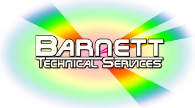CL from beam-sensitive optoelectronic materials – hybrid halide perovskites

Find out how CL quantify defects in optoelectronic materials
| Field: | Material: | Technique: |
|---|---|---|
| Fundamental and applied research | Halide perovskites | Hyperspectral imaging |
| Time-Resolved Cathodoluminescence | ||
| Quantitative Cathodoluminescence |
Abstract
Halide perovskites have emerged as exceptional candidates for next-generation optoelectronic applications such as solar cells and light emission diodes. Perovskite thin films are heterogeneous at the micro- and nano- length scales in their structure and properties. The understanding of the nanoscale is fundamental for the development and improvement of these novel materials. CL allows the properties of the material to be probed at a high spatial resolution. However, these soft semiconductors are highly sensitive to electron beam damage, which has majorly hindered the use of CL.
The use of pulsed mode scanning electron microscopy cathodoluminescence (PM SEM-CL) has been found to be useful for the study of hybrid perovskite films. These findings were enabled by the Attolight Allalin setup.
The use of a pulsed beam enables the imaging of the heterogeneity of the emission properties of hybrid perovskite films at the nanoscale via the acquisition of CL hyperspectral maps due to the low-dose pulsed nature of the electron beam.
These optimized parameters also enable the acquisition of time-resolved CL of polycrystalline films, showing significantly
shorter lived charge carriers dynamics compared to the photoluminescence analogue, which suggest electron beam-specimen interactions attributed to beam damage.
These findings represent a promising step to unlock the use of CL hyperspectral mapping and TRCL on the more beam-sensitive hybrid perovskite compositions. In extension, we anticipate that CL in low-dose regimes will play a large role in resolving the complex nanoscale of other organic and beam-sensitive semiconductors.
See more details in https://doi.org/10.1088/2632-959X/abfe3c
Source: Attolight
